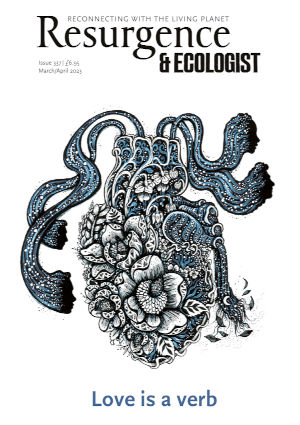Johanna Hoffman is an urban planner by training turned speculative futures proselytiser. Her book Speculative Futures charts her career from traditional, solutions-focused urban planning to something more interesting. It shows us a way of harnessing the imagination and storytelling ability we all possess to imagine different futures. In Hoffman’s own sphere, urban planning, the speculative futures approach empowers residents to work with town planners to devise a future, rather than participating in public engagement as a tick-box exercise to rubber-stamp decisions already made.
Beyond urban planning, Hoffman makes a strong argument that speculative futures is a potentially important tool in helping us work out what kind of future we want to live in and, crucially, how we might get there. Using storytelling and narratives, she argues, makes the future seem immediate, which then triggers our short-term thinking, motivating us to respond now to long-term problems. The notion that the future is a distant thing can be seen as having been a reason for too long behind the inaction on climate breakdown: the problem seemed just too far away.
The argument for speculative futures is presented through a series of case studies tracing Hoffman’s own journey into discovering more about this field. Hoffman does not fall for over-simplification or idealism, and each case study is presented with its shortcomings. The Columbusplein project in Amsterdam, for example, didn’t have long-term funding or legacy built in, and the UAE Future Lab only engaged members of the country’s political and business elite, excluding all of the migrant workers that make up 80% of the country’s population.
A number of themes emerge from these case studies. One is the role of reimagination in existing geographical boundaries. In the Columbusplein example, the residents of the neighbourhood, who are facing a number of social issues, reimagine themselves as a brand-new nation state. Los Angeles’ Leimert Park becomes Sankofa City. In Eneropa, existing European nation states have vanished, replaced by new ones with names based on their resources: Hydropia, Biomassburg, Solaria.
Other themes that emerge from the case studies are around the importance of trust between authorities and residents, something Hoffman convincingly argues is easier with a speculative futures approach than with conventional town planning. The promise of ‘inclusion’ (in a town planning setting) is based on a process of persuading people to engage with systems and spaces that have excluded and marginalised them. Hoffman could have done more to reflect on the themes that emerge from her case studies, but to be fair that is slightly beyond the scope of her argument.
Her chapter on collective imagination is where we really get into the role speculative futures might play in climate action. If you’re thinking that speculative futures is just science fiction dressed up in new clothes, Hoffman deftly sets out the case against this, pointing out what others, including social activist Naomi Klein, have argued, namely that the domination of dystopian visions in popular culture has led to widespread views that catastrophe is unavoidable.
Drawing on parallels between the AIDS epidemic and climate breakdown, Hoffman shows the limitations of fear as a motivator for action. She explains that fear is only effective in motivating people to change if the changes required are easy and the stories aren’t too frightening. Thus the practice of speculative futures has a role to play in helping us to create a future that we might want to see.
For those wanting more on action, that it is left until the end of the book might be frustrating. Although the final chapter offers some pointers as to how we might begin to think about adopting a speculative futures approach to a project, it is far from a ‘how-to’ manual and is much more an argument for the inclusion of speculative futures in a range of spheres. But Hoffman’s frank approach helps create a sense that we’re all in this together because we all have an imagin-ation, and we all have the capacity to use our senses to explore in a personal way what future conditions could be, to refine the realities we want to experience, and to craft current-day plans in response. And so, through her speculative futures workshops, Hoffman invites us to imagine how we might turn vision into action alongside her. And that’s quite a compelling invitation.







